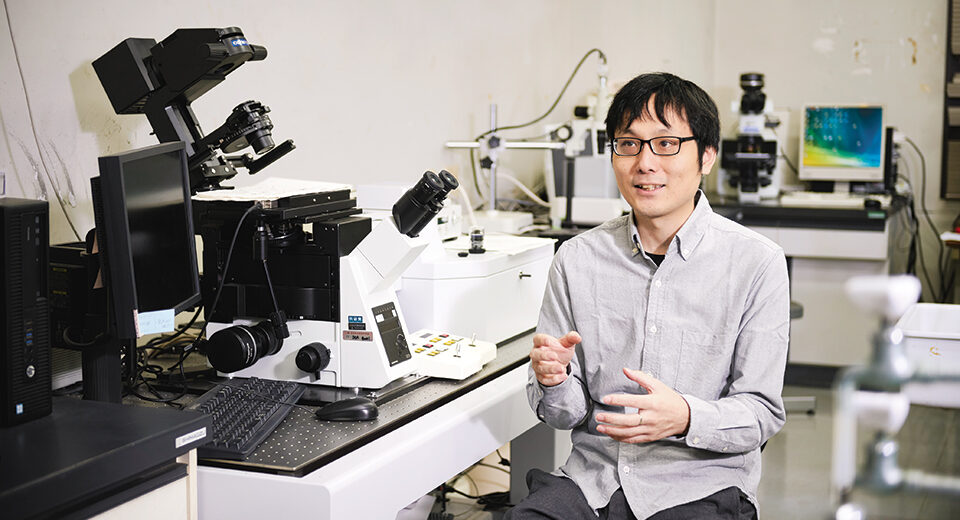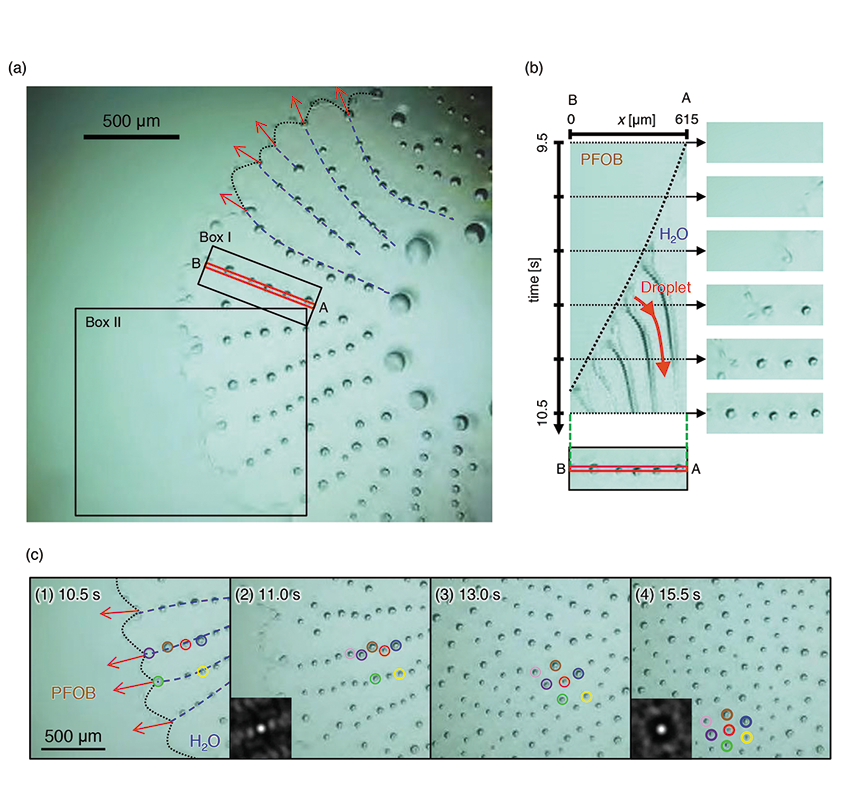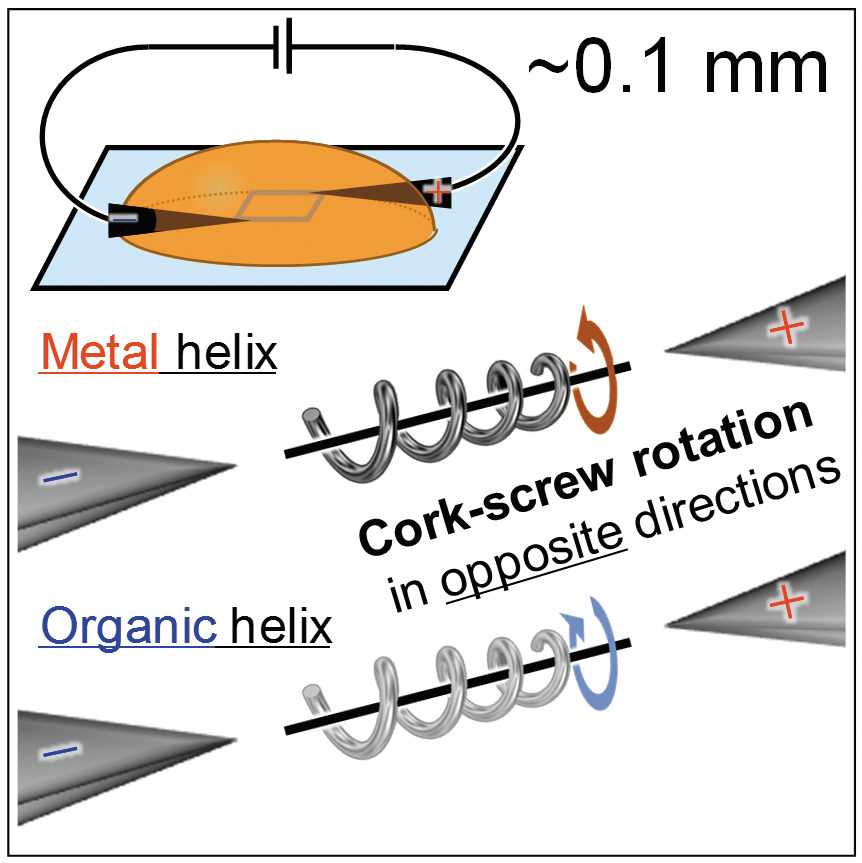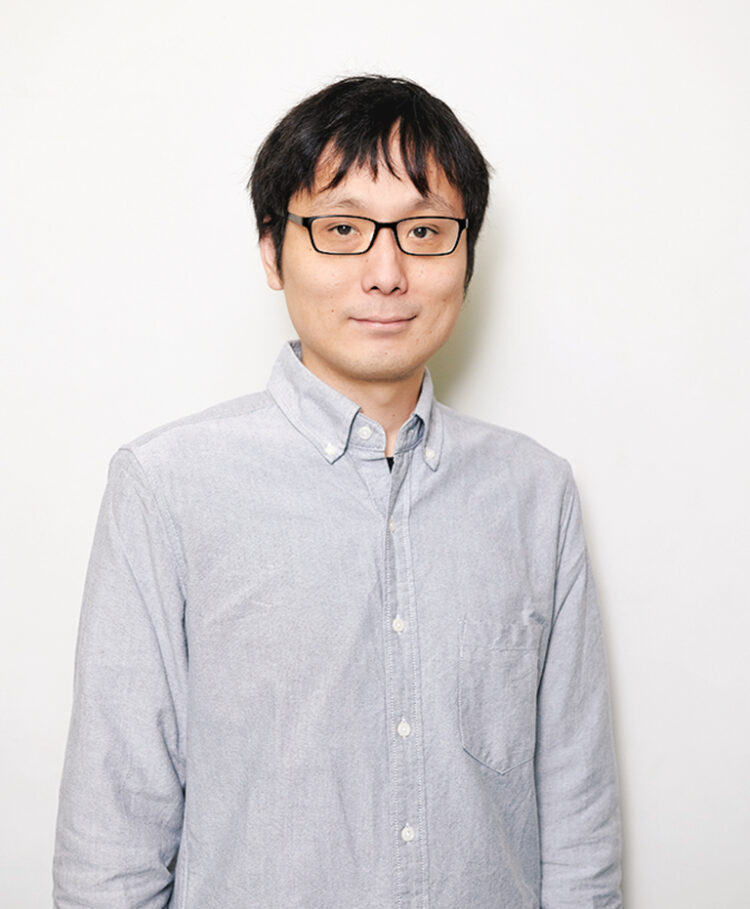Interview with researchers 6 The Development of Non-living Biological Phenomena in the Field of Chemistry

- Interview Daigo Yamamoto
- Associate Professor, Faculty of Science and Engineering,
Department of Chemical Engineering and Materials Science
The construction of an artificial chemical system through engineering application of active matters
In the manufacturing world, products are created by drawing meticulous blueprints, forming, and assembling those designed parts. On the other hand, in the natural world, organisms can form themselves without consciousness or blueprints because they have a mechanism through which they utilize the energy generated through chemical reactions with external substances for their growth. The flexible chemical systems in organisms that enable them to respond to various environments are far more superior to artificial objects, claims Dr. Yamamoto, an Associate Professor at Doshisha University. “The details on the mechanism of the phenomenon of spatiotemporal self-organization, which is a mundane occurrence in the natural world, are yet to be elucidated due to its complexity, but it functions follow the laws of physical chemistry. My goal is to express the phenomena that occur in nature in a non-living system and to discover its mechanisms.”
Dr. Yamamoto is researching active matters, which means matters and objects that have autonomous motion capabilities. While these include groups of microorganisms and organisms, Dr. Yamamoto specializes in active matters in non-living systems. This concept was proposed in the 2000s and garnered attention in non-equilibrium science, but is not widely recognized in the field of engineering. “If the functionalities of active matters can be applied in engineering, it would be within the realm of possibilities to construct artificial chemical systems that are capable of autonomous motion,” he explains. “Furthermore,” he says, “it would be possible to bring these new ideas beyond our present capabilities and norms, such as chemical robots composed of solvents and polymeric systems, into the realm of science and technologies in the future.”
Dr. Yamamoto is particularly focused on reproducing biomimetic motor mechanisms such as collective movements and self-organization using colloids, oil droplets, and polymers. In fact, before he began working at Doshisha University, he used to operate primarily in the field of particle synthesis and examine dried particles under electron microscopes to evaluate them for their material properties. However, after joining Doshisha University, he became familiar with the work of Dr. Akihisa Shioi, also a professor at Doshisha University. This encounter opened his eyes to the infinite possibilities active matters hold. “I can observe and study dried squid, but that would not give me any information on live squid. I realized for the first time that by focusing on the material properties in the state of motion, I would be able to get closer to the essence of that matter,” Dr. Yamamoto explains, while demonstrating a video of a chemical substance that moves around as if it were an organism with a will.
The discovery of the self-organization phenomenon of fluorocarbon oil on water surfaces
Research on active matters is unpredictable; the slightest change in the conditions, or even under the same conditions, results in fluctuating results. For this reason, Dr. Yamamoto considers potential combinations by drawing upon the case studies of previously discovered non-equilibriums or by changing the materials or operational conditions as he seeks a new phenomenon.
In a joint study with Dr. Krafft, who is a professor at University of Strasbourg, and others, Dr. Yamamoto and team discovered that perfluorooctyl bromide (PFOB) forms a specific pattern on its own over time. When a droplet of PFOB was dropped onto water surface, a thin layer of oil was formed, which spread across its entire surface. Then, as the oil partially evaporated due to a local dewetting transition, circular PFOB-free domains began to form, which appear as holes. The thin film near the holes began to form into a cluster of slightly large oil droplets that look like a pearling structure. Then, near the pearling oil droplets, small oil droplets started to form radially, followed by a continuous formation of such droplets from the center of the hole towards the outside of the hole in a rhythmic manner. Finally, these oil droplets were scattered across a wide area as dots. As a whole, they operated in a collective and regular movement that repeatedly expanded and shrunk (Figure 1). This example is expected to become an ideal model system that would help us understand the natural phenomenon known as the “mechanism of the self-emergent spatiotemporal order,” and it was published in Nature Communications. “If the hydrophilic state of PFOB and its evaporation speed could be controlled, it is possible for it to be expressed with other solvents as well. For example, if you were to dissolve the nonvolatile material in oil, we think it is possible to synthesize particles along with regulated ordering at the same time,” he states.

Towards the development of an innovative liquid delivery system where the flow is generated in microchannels

Dr. Yamamoto has been considering the material properties of catalyst particles and their reaction materials to find the right combination. He has combined and exchanged these particles to compare and examine them and have found several intriguing phenomena. In an experiment that involved commercially available platinum (Pt) catalyst particles, it was found that when the particles were put in an aqueous ethanol solution compared to when they were put in a hydrogen peroxide solution, the particle’s rotation direction reverses. That is to say, different solutions changed particle movements. Additionally, in another experiment, to investigate the response of a specially shaped microscopic substance under a DC electric field, his research collaborators Dr. Kaori Kamata from the National Defense Medical College and Dr. Tomokazu Iyoda, a professor at Doshisha University, provided spiral microalgae called Spirulina. When Spirulina is put in silicone oil and tungsten electrodes inserted, and the voltage applied, they found the algae spun between the electrodes. Then, after preparing a nickel-plated version of Spirulina under the same condition, its spin reversed. Thus, it was discovered that by using the dielectric algae as conductors, it is possible to cause a change in their movement (Figure 2).
These experiments’ findings are expected to find application as the driving force, which will create a flow in one direction within fine spaces. One example is the artificial liquid-sending system that will feed into microfluidic devices (microchannels and reaction vessels made using microfabrication technologies), which is currently approaching its practical use. While it is common to use a liquid sending pump from the outside of the flow path to inject fluid, the smaller the flow path, the greater becomes the pressure loss. It has thus been a concern that this could lead to the deformation or destruction of the equipment. However, if a micropump that provides a driving force could be installed within the flow path, it is possible to let the flow generate from within. Compared to delivering the liquids using external pressure, there will be less of a burden on the body through this method. This also allows for the sending fluid into extremely small spaces, a feat that once was considered an impossibility. There is no doubt this approach will bring about a qualitative shift in conventional chemical systems design.
The research on active matters within the engineering field has just begun. As its path for development is yet unclear, Dr. Yamamoto is quite excited that he gets to explore uncharted territories every day. “I plan to research various experimental systems with entirely different materials, scope, and driving force so that I may discover biomimetic movement mechanisms. As a researcher, I wish to serve as a bridge between biological phenomena and engineering,” Dr. Yamamoto concludes.

